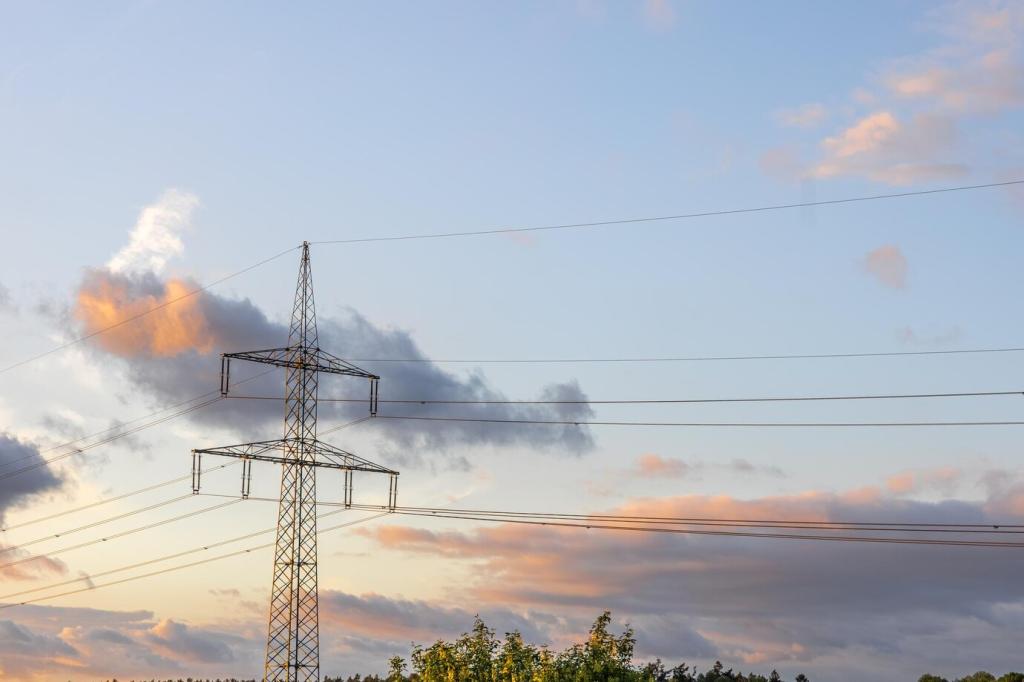Optimizing Energy Distribution in Smart Grids for EVs
Selected theme: Optimizing Energy Distribution in Smart Grids for EVs. Join us as we explore how smarter coordination, fair pricing, and real-world pilots unlock reliable, cleaner charging at scale. Share your experiences and subscribe for future deep dives.


Peak Shaving and Load Shifting
Even small schedule tweaks can flatten the evening surge: staggered starts, power caps, and post-midnight charging windows. Aggregators coordinate thousands of vehicles, turning chaotic behavior into predictable, gentle ramps that reduce transformer stress and defer costly upgrades.
V2G: From Cars to Grid Support
Vehicle-to-Grid enables parked EVs to stabilize frequency and support voltage, especially during brief imbalances. It requires careful attention to battery warranties, interconnection rules, and user consent so drivers feel confident while the grid gains valuable, dispatchable flexibility.
A Coastal Town Pilot
In a small coastal town, fishermen charged vans overnight under a coordinated schedule. The utility reported quieter transformers and fewer complaints after storms. Drivers loved guaranteed morning range, and the town council asked residents to vote on expanding the program.
Forecasting-Driven Smart Charging
Machine learning models anticipate charger occupancy, local feeder limits, and typical arrival times. Coupled with grid constraints, scheduling optimizers shift charging to low-impact moments, improving reliability while preserving driver needs with softer constraints and user-friendly opt-out options.

Time-of-Use and Real-Time Pricing
Time-of-Use rates are easy to understand, while real-time pricing mirrors actual grid conditions. Blending both with guardrails—like bill protection and clear notifications—encourages smart charging, avoids bill shocks, and supports grid balancing when it matters most.
Designing Incentives for Fleets and Households
Fleet depots respond to demand charges and operational windows; households respond to convenience and predictable bills. Tailored rebates, flexible demand credits, and fleet-coordination bonuses keep participation high, aligning personal incentives with system reliability and cleaner energy goals.
What We Learned in Rotterdam
A city tender prioritized chargers that follow dynamic carbon-intensity signals. Operators won by proving uptime, customer simplicity, and measurable peak reduction. The early results: shorter peaks, higher renewable utilization, and residents opting in because the app made savings effortless.
Smart Chargers that Speak the Same Language
Interoperability through OCPP and ISO 15118 helps chargers and vehicles negotiate power, authentication, and smart schedules. That common language lets operators orchestrate thousands of ports, pushing updates, enforcing limits, and responding quickly when grid conditions tighten unexpectedly.
Microgrids and Local Energy Markets
In campuses and neighborhoods, microgrids coordinate solar, batteries, and EV load to trade energy locally. This reduces upstream stress while keeping resilience high. Local markets reward flexibility, letting drivers earn by charging when the community most benefits.
Resilience When the Lights Flicker
During an outage drill, stations gracefully throttled, critical vehicles received priority, and campus batteries bridged the gap. Post-event analytics revealed which feeders constrained first, guiding targeted upgrades and firmware tweaks that improved reliability without expensive overbuild.

Chasing the Sun and Riding the Wind
Solar peaks at midday, while wind often rises overnight. Smart charging shifts energy to those windows, raising renewable utilization. With carbon signals exposed in apps, drivers feel the impact of simple choices, reinforcing climate progress through clear feedback.

Carbon-Aware Routing and Charging
Navigation that considers charger availability, queue length, and carbon intensity can steer drivers to cleaner electrons. Even a ten-minute detour may cut emissions meaningfully, especially during fossil-heavy peaks. Transparent scores keep it motivating rather than prescriptive or confusing.

Campus Emissions, Measurably Down
A university paired rooftop solar with smart charging and modest V2G. Within one semester, charging emissions intensity dropped sharply. Students loved watching live carbon dashboards, and the energy club published weekly summaries that boosted participation even during exam crunches.
Secure boot, signed firmware, and strict certificate management across OCPP and ISO 15118 reduce attack surfaces. Network segmentation and anomaly detection catch weird traffic early, while incident playbooks ensure rapid, transparent responses that protect drivers and operators alike.

Join the Movement: Policy, Community, and Builders
Aligning interconnection rules, metering, and performance standards reduces friction. Public funding tied to interoperability and demand flexibility unlocks scale. Comment with your city or utility, and we’ll highlight policies helping optimize energy distribution for EVs where you live.

